Meet Dan DenDanto, an expert in restoring whale skeletons for museums and exhibits
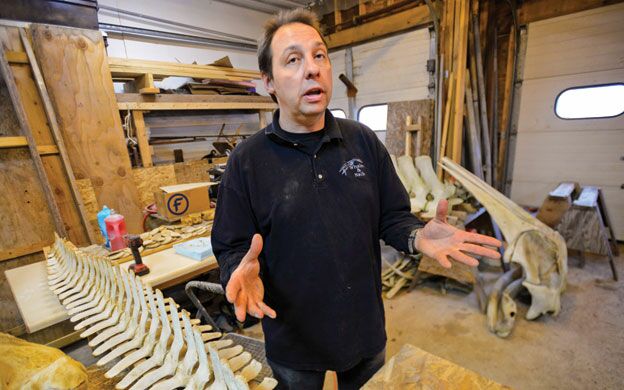 Photo / Anna Travers
Dan DenDanto, a leading expert in restoration of whale skeletons, has created exhibits seen in museums, science centers and at least one national park.
Photo / Anna Travers
Dan DenDanto, a leading expert in restoration of whale skeletons, has created exhibits seen in museums, science centers and at least one national park.
Dan DenDanto, a Mount Desert Island-based scientist, is one of the nation's foremost experts in the specialized field of cleaning, articulating and restoring whale skeletons for display. The Seal Cove resident is a research associate at the College of the Atlantic's Allied Whale program and is director of its North Atlantic Fin Whale Catalogue. In more than two decades at his home-based shop, Whales and Nails, he has completed 16 installations.
The primary cleaning technique he uses involves flensing the skeleton and burying the bones for a year in compost, where microorganisms eat the remaining flesh. His exhibits are dynamic and convey lifelike poses. One exhibit shows a female right whale and her fetus — who were both killed after being struck by a ship — and is housed at the North Carolina Museum of Natural Science in Raleigh. He created an exhibit of a humpback whale for the Seacoast Science Center in Rye, N.H. He has worked with skeletons collected by Harvard scientists more than a century ago.
Last summer, he was in Gustavus, Alaska, the gateway to Glacier Bay National Park, to install the 46-foot skeleton of a humpback killed when it was struck by a ship. Given the name of Snow by photo-identification researchers, she was observed regularly in Glacier Bay since 1975 and died in 2001. It is the second largest rearticulated humpback skeleton display in North America.
We asked DenDanto about his recent work. Below is an edited transcript.
Mainebiz: What was challenging about the Snow project?
Dan DenDanto: It was a difficult installation. We trucked it across country and we had a 10-day installation window. We took a ferry from Washington to Juneau, and another ferry from Juneau to Gustavus. It was in an unbelievably remote location —a community the size of Isle au Haut, but with mountain ranges all around. The only connection is the ferry. As soon as we got off, they told us they had canceled the return trip. They scheduled us for an earlier ferry, cutting my installation window in half, which was impossible. Halfway through the installation, we had a 5.9-magnitude earthquake that broke the connections on the ribs. [If] you're going to Alaska, you're going to really plan it out. So we had every nut and bolt for every contingency. I had brought welders and extra steel and we ended up bolstering the rib cage. But I had to abandon the truck-and-trailer there. I was going to drive home, and instead I flew home. It was a month before I could get the truck on another ferry out. I flew back — and was able to coincide it with the exhibit's opening.
MB: What are you working on now?
DD: A pilot whale, for Bridgewater State University. It was collected in the 1970s. At that time, the Marine Mammal Protection Act had just been enacted and scientists didn't even really know what whales were in the Gulf of Maine. Bridgewater acquired this skeleton and it was done as a student project, and not very well. The craftsmanship is crude; it wasn't cleaned well. I've had it several months. It's slow going. It was covered in varnish, which locked the natural oil into the bones. I'm treating the bones with acetone to remove the varnish. They're not 100% clean, but they're a thousand percent better. We're still deciding on a posture. The installation is a difficult spot — a beautiful, 54-foot-tall atrium, a little bigger than an elevator shaft. You can almost touch it because of the balconies around it, but [it's] 38 feet off the lobby floor.
MB: What drives your interest?
DD: It's always about whale conservation. The best conservation comes from changing the way we look. This matches my interest in anatomy, building and sculpture, with this opportunity to educate a new generation about diversity and how to protect it. There's something about skeletons that humans love. And there's something about whales — the magical, mega-fauna icon of conservation — and the marriage of those two things that is a powerful tool for making a message.

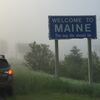

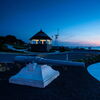
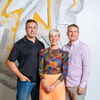
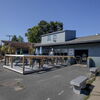




Comments